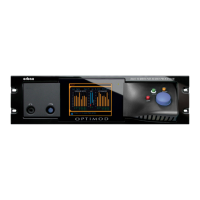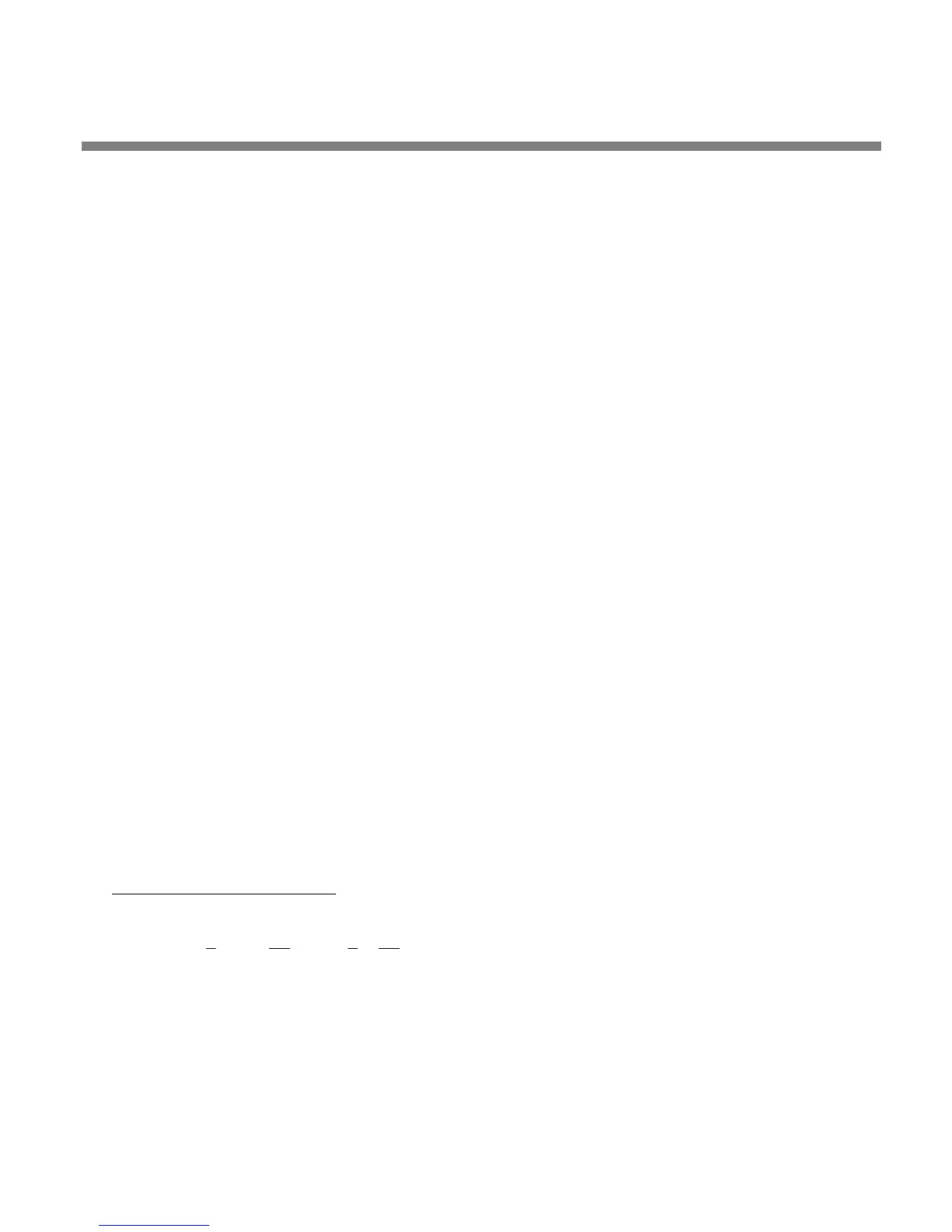OPTIMOD SURROUND PROCESSOR OPERATION
3-83
loudness would not appreciably change. This suggests that while LFE con-
tent does contribute to the perceived loudness, Equation (2)
9
does not
sufficiently predict how that content should be included.
A recent Australian study may shed light on the failure of BS.1770 when program
material contains considerable energy at very low frequencies.
10
The authors used
octave-band noise in subjective listening tests with the goal of verifying the K-
weighting curve used in BS.1770. The authors state:
Comparison of the test results with an image of the filter curve currently
specified in ITU-R Recommendation BS.1770 (Figure 13) shows good
agreement at 250 Hz and above 500 Hz, reasonable agreement at 500 Hz,
but marked difference in the bottom two octaves. The relatively good
performance of the BS.1770 algorithm in ITU trials suggests that, in par-
tial loudness terms, there was probably not much test content in the 125
Hz band or below. While the existing BS.1770 filter curve is probably a
good choice in applications where the program is dominated by speech,
and it is certainly an improvement on the A and B curves in that applica-
tion, it is likely to give significant errors in measuring the loudness of
other programs with more partial loudness in the lower frequencies, such
as movie soundtracks and popular music. It is therefore desirable to im-
prove on this filter for more general measurement of program loudness.
Conclusions
Several studies have shown that the loudness “comfort range” for typical television
listening is +2, –5 dB
11
. Beyond this range, a viewer is likely to become annoyed,
eventually reaching for the remote control to change volume (or worse from the
broadcaster’s point of view, to mute a commercial). Whether measured via the CBS
or BS.1770 algorithms, the CBS loudness controller algorithm in Orban’s current
products effectively controls subjective loudness to much better than this +2, –5 dB
window.
The results using BS.1770 metering would be even more consistent if that algorithm
employed silence gating (such as that used in the Dolby LM100) to prevent un-
adorned dialog from reading low compared to music and dialog with substantial
background music or effects. The newer EBU R-128 loudness meter is intended to
correct the “silence gating” problem with BS.1770 but as of this writing, the low
frequency issue has not yet been formally addressed by standards-setting bodies.
9
ss
T
i
T
x
x
T
x
x
LFE
T
RLCRLi
dBdtdtGwLeq
ref
iw
ref
w
,,,,
,)(
0
0
11
2
2
,
2
2
=
⎥
⎦
⎤
⎢
⎣
⎡
+=
∫
∑
∫
10
Cabrera, Densil; Dash, Ian; Miranda, Luis, “Multichannel Loudness Listening Test,”
AES Convention Paper 7451, 124
th
AES Convention, Amsterdam 2008
11
ATSC A/85:2009 Annex E, “Loudness Ranges”

